Smelling of Rosemary
This week: Broken instruments; Moving time; Smelling of Rosemary;
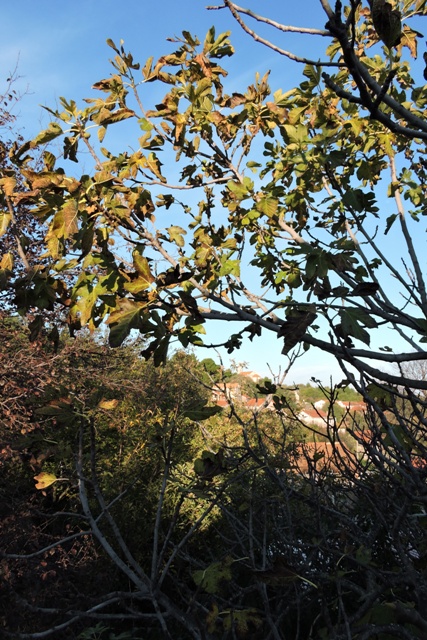
It’s that time of year when the sun only creeps above the hills to the south of my home around 8.30am.
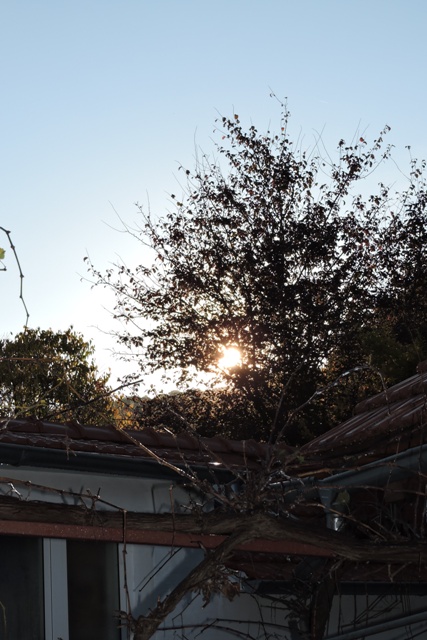
The official sunrise is an hour earlier but nowhere from my home can I see a flat horizon. We are surrounded by hills, both close, very close and distant.
It will only be seven weeks though before the sun is starting to climb noticeably higher every day. However it is in this period that we might get a frost.
One morning this week, as I did my morning walk round, there were the first ice crystals visible on some foliage. This is in an open area at the bottom of the orchard.
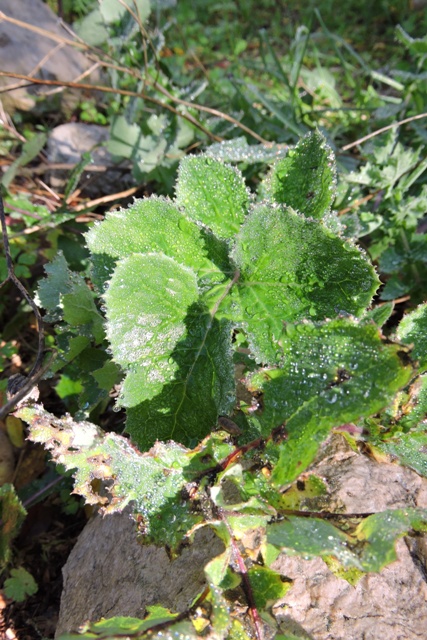
This is a very slight radiation frost. It is caused because of clear skies, almost no wind and the plants radiating their daytime heat away. Together with a dewpoint that coincides with the temperature, the plant’s moisture has just begun to freeze.
It’s early for this to happen and is a warning about what sort of winter we might have. I suspect it may be a cold one, so this week has been all about preparing for winter…
Broken instruments
I hate it when things break.
If I have done something daft and broken something, it’s not OK, but I can live with my error or carelessness. However when something just breaks of its own accord I tend to get frustrated.
While I was clearing up in the greenhouse at the end of last week, I found that the maximum/minimum thermometer was all to pot.
This is an analogue system. A “U” shaped tube is filled with two different liquids. Then a couple of steel indicators inside the centre capillary tube, and a magnetic strip at the back to keep the indicators in place.
It is all in a plastic cover, but the liquids had become separated so the measurements were no longer correct. How it happened, I do not know, because the thermometer was fixed to the wall with a long screw.
I’ve had another MAX/MIN thermometer of the more orthodox kind where the capillary tube is filled with mercury for years. It was in my greenhouse when I lived in the UK, so like a lot of my things, it has been around the world. The mercury in this had also broken up too, but I had given up trying to fix it.
Searching on line I found just a single site discussing how to repair a thermometer. The technical term is “rejoining a separated thermometer column“, but you knew that didn’t you?
The old thermometer was easily dismantled, with just two self tapping screws.
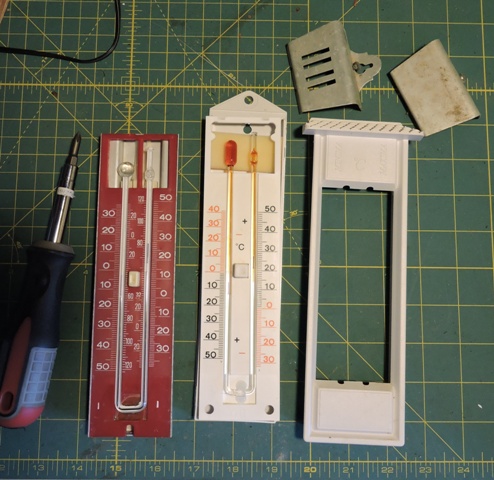
To separate the newer one, I had to put a fine blade between the plastic parts to unlatch the plastic ribs which held it together.
Then I followed the online instructions – all of them. First gently tapping, then using centrifugal force and finally putting the glass on a central heating radiator to slowly expand the alcohol in the bulb.
I had some early success in getting the mercury to re join. However the alcohol filled thermometer also had the steel indicators out of place too.
To solve the stuck indicators, I needed to use two Neodymium magnets. I placed one on either side of the glass, to draw the steel out of the way and through the liquid boundary. Finally tapping the glass again to re join the liquids.
Eventually I had all the capillary liquids joined up and in the right order and the steel indicators in place. Everything was cleaned before being reassembled.
The final check was to see if the indicated temperatures were the same on both the minimum and maximum side scales. They were.
The result is that I now have two fully functioning MAX/MIN thermometers, one being well over 30 years of age.
There is a place for digital equipment, and I have a digital thermometer in the greenhouse. The battery operated WiFi device sends data to the weather station console, in tenths of a degree Celsius.
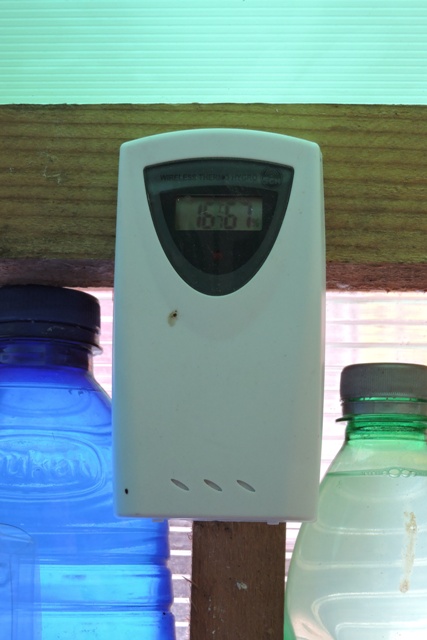
But there is still a place for an analogue, glass tube thermometer too. The traditional unit tells you visually, immediately, how cold it was (left column) last night.
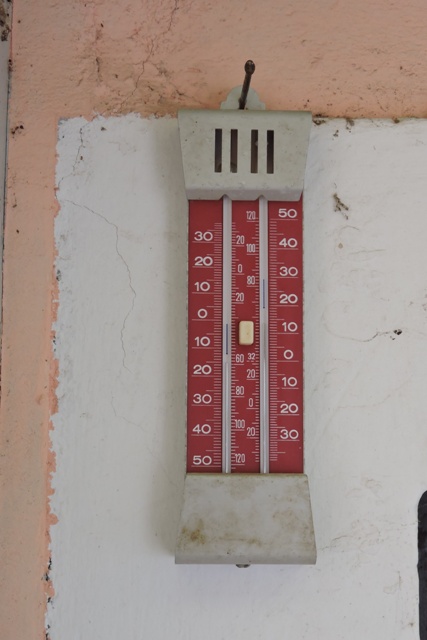
Moving time
With some clear, moonlit nights this week, the average overnight temperature has dropped below the average for the time of year. The average minimum temperature has been reduced by two especially cool nights.
On one night in particular, the temperature was just +3ºC measured at 1.5 meters, so cool by anyone’s standards.
I decided to move my Bird of Paradise plant, Strelitzia reginae, into the porch for the winter. It is a tender plant and while it will survive a few low temperatures, I think we may have quite a few cold nights this winter, so I want to protect it.
It is in a large (65cm) tub, purchased from the builders merchants. These tubs are normally used for mixing small batches of plaster or render in.
It is ideal as a pot for plants because it is “builder proof“. However with recent rain soaking the compost, it is also heavy, so I decided to make a small platform to move it around on.
I had some old 50cm wide boards, so cut one up to make a 50 cm square base. This is just fractionally larger than the tub base. But to get the sack barrow underneath, I also needed a couple of thin rails, to just lift the board slightly.
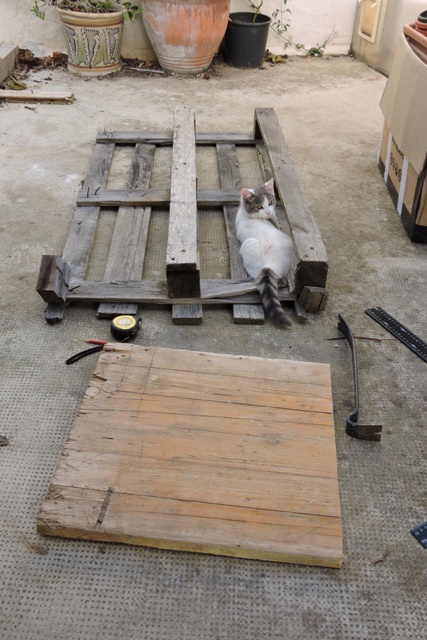
I’ve had a light pallet waiting to be cut up for firewood for a while. So with a nail bar, I dismantled it to get some 1cm thick rails.
Cutting two to length, I then screwed them to the wooden base and gently slid the plant and container onto it.
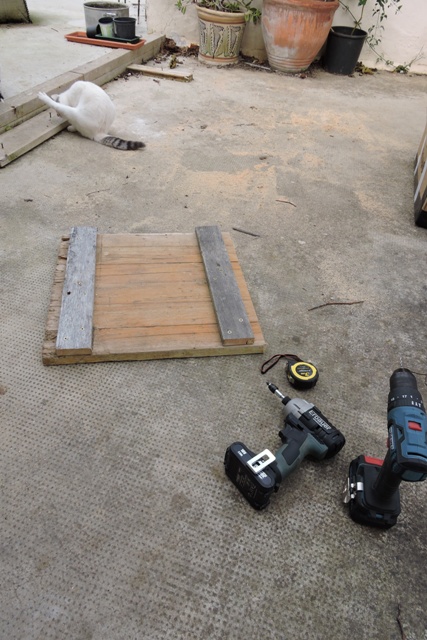
The whole thing needed to go through a 70cm wide doorway. So just to be sure, I took the door off the hinges, to give a little more room.
With the sack barrow under the wooden platform and the planter held on with a loading strap, I manoeuvred it into place in the storm porch.
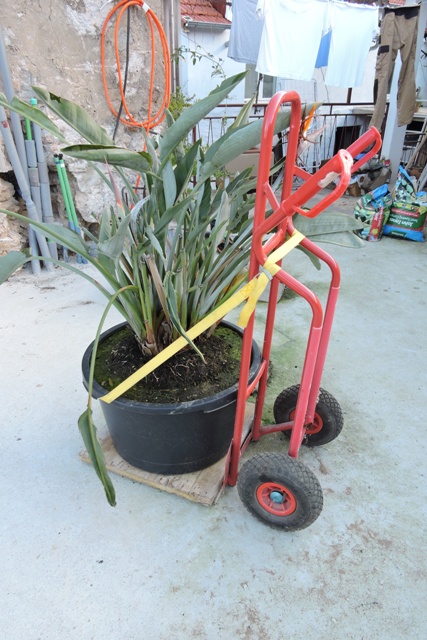
This area is south facing and gets sun until 12 noon in winter, so is relatively warm, even though it is unheated.
There are two large flower buds on the plant and I hope that with this weather protection, they will flower.
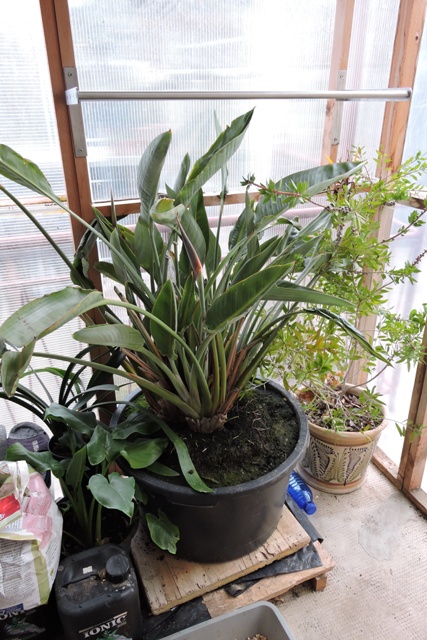
For good measure, I also moved the Bottlebrush plant into the corner as well.
Smelling of Rosemary
Almost every citrus tree in the orchard now has blossom on it.
I have mentioned before that Citrus are unusual because they mostly flower in the winter, and any one tree can have blossom, immature fruit and ripe fruit on it at the same time.
After the disastrous 2017 New Year freeze, when I lost almost every new citrus sapling that I had planted, I then started to wrap them in bubble wrap as a frost preventative fleece.
This was successful in that I didn’t have any more losses. However being starved of light, when I removed the wrappings after the danger of frost had passed, most of the leaves had fallen off.
I then developed the wire cage system. This is where six meter lengths of 10mm steel rebar have been let into the ground. They provide a frame two meters high and six meters in circumference around each tree. This is then covered for the winter in green mesh. It has been a very successful idea.
I generally start wrapping the frames at the beginning of December. However in view of the falling temperatures this week, I have done the job a couple of weeks early.
At the end of each winter season, I pick a dry day to remove the mesh, carefully fold it all up and store it for use the next year. So this week I opened the storage box and brought out the mesh.
I should add that I have had plenty of help from the kittens!
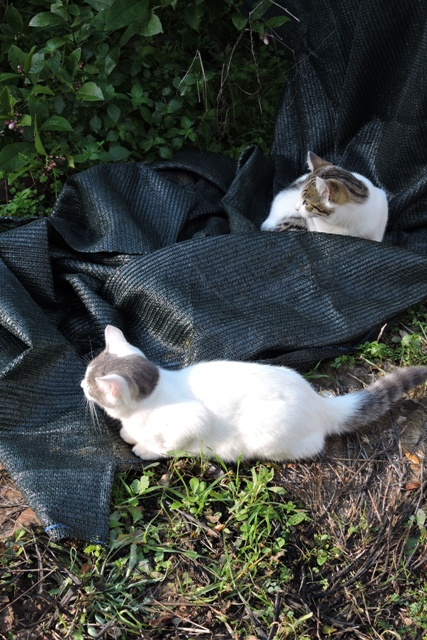
It has been a couple of day’s work to get all the frames covered and the tops put on. While the trees are below 1.5 meters tall, I am not covering the frame completely. Only one lemon has grown so well that I needed a full frame cover.
The smaller trees just have a flat cover attached over the top. This means there is less surface area for the wind to catch.

This photograph was taken at mid-day. Look carefully and you can just see where the sun is touching the building at the end of the orchard. For the next 8 weeks, this orchard will not get any sunshine, whatever the weather.
In one corner the frame is quite close to my herb bed. I have been trying to get an alphabet of herbs, starting with Angelica at one end, and ending with Rosemary at the other.
The Rosemary is in flower at the moment. So as I rubbed past it several times, while fitting the green mesh, the scent from the essential oils in the flowers rubbed off onto my clothes.

The result is that I’ve come in every day, smelling of Rosemary. NCG
One Response
Richard Ellis
Mate,
Is your Rosemary the edible kind? I grow it to cook with and dry for later use )or just hang it in the corner and let it freshen the air in the house.